
If 2020 saw millions of consumers migrate online, 2021 showed the staying power of digital. From shopping to services, new users who may have begun their online journeys due to necessity are now proactively deepening their usage. Speed, convenience, and price are just a few of the reasons more consumers are now choosing digital-first lifestyles.

In 2021, APAC’s digital migration continues with people going online to access services that were disrupted by physical shutdowns. Vietnam has seen eight million new digital consumers since the start of the pandemic, with more than half coming from non-metro areas. But what we’re also seeing this year is the staying power of digital. Rising searches in 2021 paint a picture of how the many newcomers have not only dipped their toes into the online world but also taken the plunge to integrate digital into their lifestyles.
After five months of physical shutdowns in 2021, Vietnamese consumers who have grown more comfortable with the digital world are now choosing to stay online. Of the country's new digital users, 97% are still using online services and 99% intend to keep doing so. Benefits like time and cost savings, diversity of product offerings, and delivery services are motivating shoppers to choose digital-first experiences. Vietnam's 2021 Gross Merchandise Value is expected to hit $21 billion, a 31% year-on-year surge, underpinned by a 53% growth in e-commerce.

The rise in users pushed online by the pandemic meant that brands had to adapt and digitalize at a scale and pace they had never planned for or expected. In the next five years, eight in 10 merchants anticipate more than half of their sales to come from online sources. This is prompting digital merchants in Vietnam to get tech-savvy, with 81% of them likely to increase their usage of digital payments in the next one to two years.

Now that consumer behaviors are no longer only fueled by the pandemic, but also by the draw of a digital-first lifestyle, brands need to not only COVID-proof their business, but also future-proof it as well. This is a watershed moment to rethink the agility of your business model to be readier to respond to future changes that may lie ahead, while still keeping the customer at the center of what you do.


New users and businesses online
As new users come online, businesses are evolving their digital strategies to meet them there. Growing searches across APAC show businesses seeking to understand more about digital transformation strategies and online inventory management, while new online shoppers are looking to be rewarded for their brand choices.

Search for "ngân hàng online" (online banking) and "mở thẻ online" (open card online) rose by over 58% and 76% respectively.
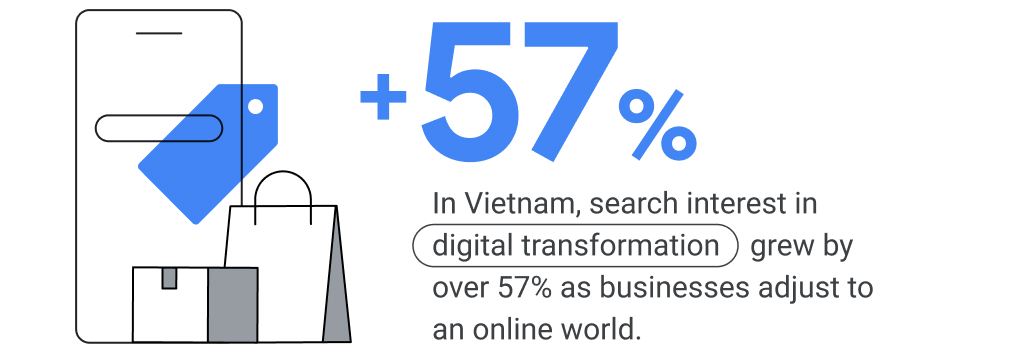
Online-first shopping experiences
Today, almost half of APAC consumers surveyed see no reason to go in-store if they can buy what they need online. Rising searches show how shoppers are using digital channels as a helpful tool for decision-making, and are reluctant to endure downsides like delivery waiting times and costs.
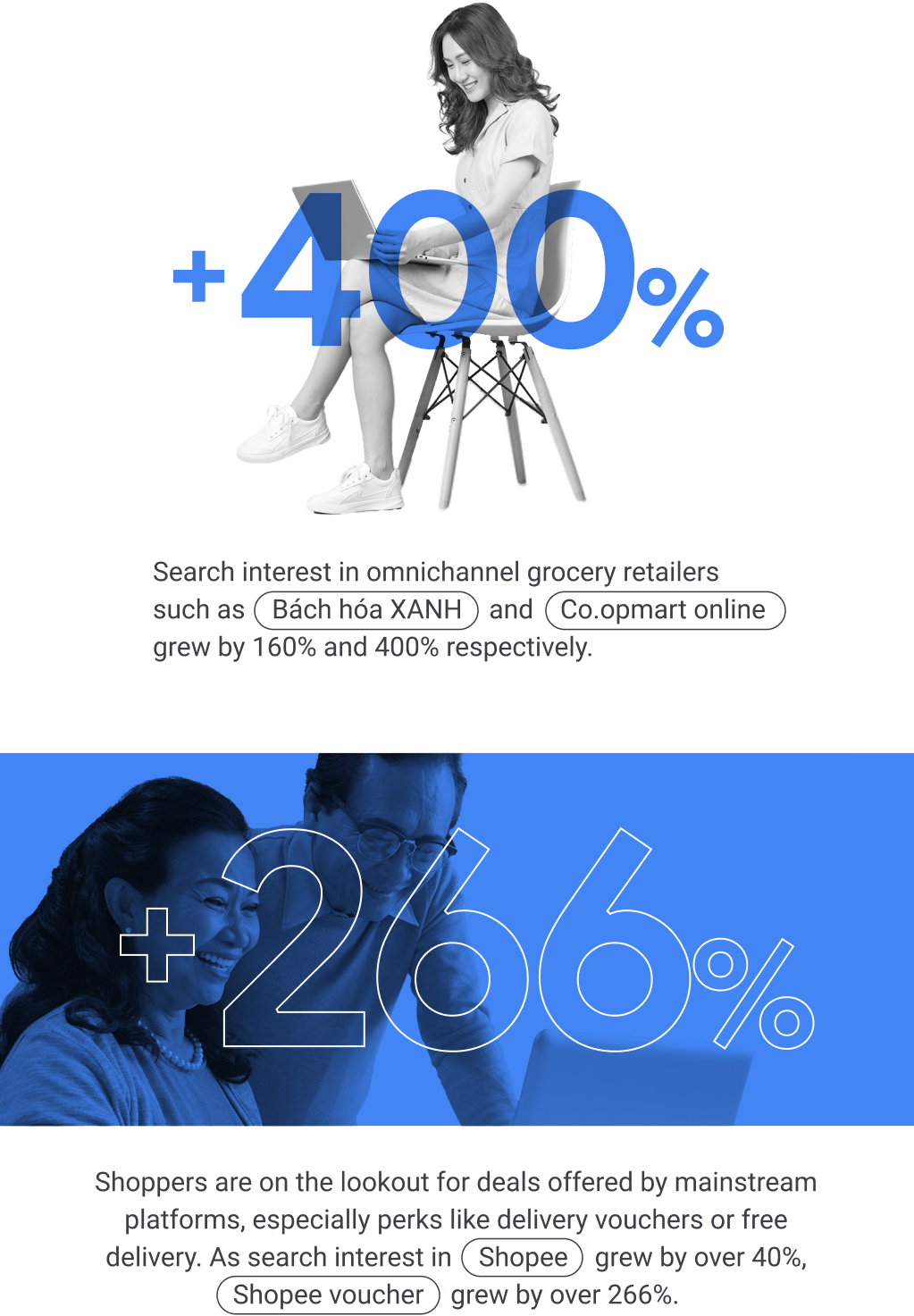
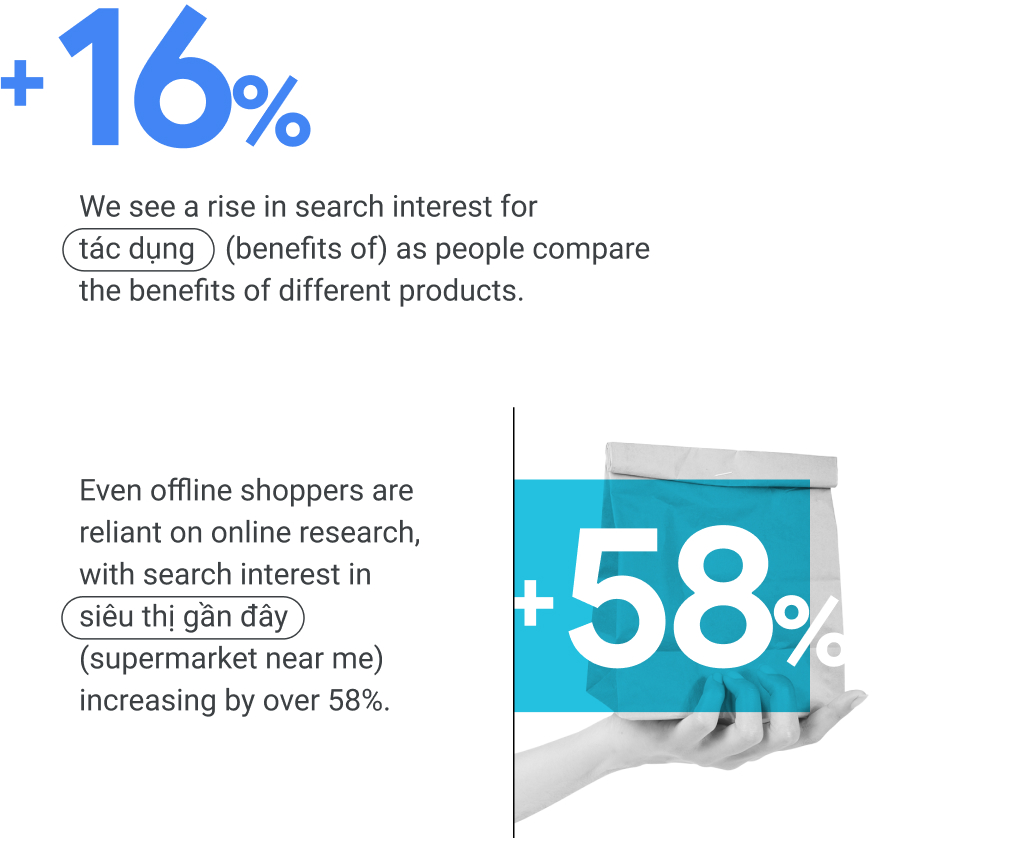
Digital in our day-to-day
People are expanding the use cases for apps and technology in their day-to-day lives, as well as experimenting with new digital services like contactless payments. While digital wallets may have started out as a way to pay safely during the pandemic, the ease and convenience they offer are winning over consumers for good. Since the pandemic, cash transactions have declined in Vietnam while e-wallet transactions rose by 1.3X, indicating a massive shift toward digital payments.
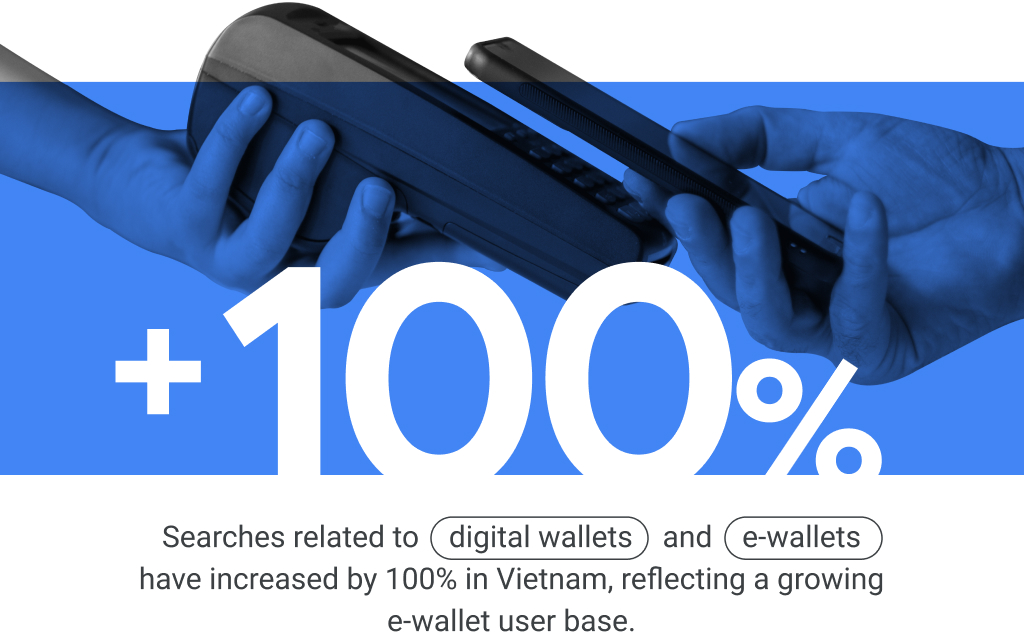
Preference for digital formats
Searches for digital formats continue to gain momentum as APAC consumers entertain themselves online. Streaming on connected TV has taken off, and live commerce is expanding its reach, with platforms like Shopee reporting more users using livestreams to connect with sellers in the comfort of their homes.

While COVID-19 created an urgency for more people and businesses to meet online, searches reveal people increasingly prefer digital-first engagements. At first, many brands responded to the initial rush online by finding flexibility in existing marketing strategies to solve for pandemic-related challenges. Now, the fast evolving online landscape calls for a more agile business model that is not only COVID-proof, but future-proof as well.

“What many leaders feared, and the pandemic confirms, is that their companies were organized for …standardization and predictability that’s [now] being overwritten by four big trends: a combination of heightened connectivity, lower transaction costs, unprecedented automation, and shifting demographics.”

With the magnitude of the shift to online as a preferred channel for so many people in APAC, it’s clear that digital is where the masses are at. This means that channel strategies that only rely on “above the line” advertising for mass reach are fast becoming outdated.

For example, although TV viewership for the Tokyo Olympics hit a record low, advertising budgets did not reflect this shift, with brands still paying as much as ever for TV commercials. Is your audience and media strategy reflecting the reality of where audiences are today?

Before deciding on your digital advertising strategy, check out best practices and tips for audience reach and segmentation strategies.

Stay on top of the latest consumer insights and best practices across marketing objectives and shopper moments, and use them to inform your digital strategies.

Make your YouTube ad creatives more effective by scrapping these five assumptions and adopting a YouTube-first strategy.

Consumers expect to be able to fulfill their shopping needs whenever they need, wherever they are. We know purchase decision-making is not linear, there is a complicated web of touchpoints that differs from person to person.
Be ready to meet people wherever they are on their shopping journeys and create helpful bridges to take them one step closer to your storefront.
Show up for people searching for what you’re selling by featuring your products on free listings in the Shopping tab on Search.
Shorten the path from your ad to your virtual storefront by connecting your product feed to either Video action campaigns to drive customers to your site, or App campaigns to take them to your mobile app.
Search interest in “open now near me” has grown over 2X globally year over year. To create a seamless online to offline experience for your shoppers, use Local inventory ads to promote your products that are available for in-store or curbside pickup.

L'Oreal Vietnam embraced Search, YouTube, and Display to drive leads and online sales. What started as an action-driven Shopping campaign quickly transformed into a multi-platform approach that made full use of YouTube inventory and the automation behind Smart Bidding.

"By driving results across our entire funnel, our campaign and sales became more sustainable. Our Smart Shopping Return on Ad Spend was constantly above 200%, which outperformed last year’s Standard Shopping Campaign by 2.2 times."
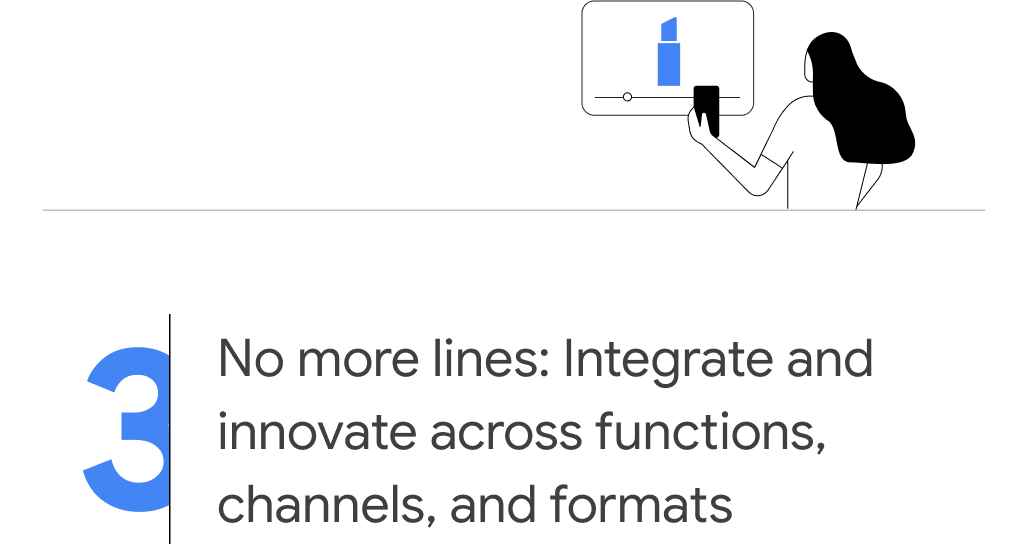
Digital is leveling the playing field for businesses. Traditional industry norms such as size of stores and retail legacy matter less in the next normal where 90% of APAC consumers expect retailers to sell their products online, and even those who purchase offline still refer to at least one digital channel during their research journey.2 This means that every brand has the opportunity to enjoy borderless growth, especially those that focus on seamless online-offline experiences for their customers.


Build an agile omnichannel strategy that enables your business to unlock short-term wins and long-term growth.
An omnichannel ecosystem doesn’t just entail showing up online. More importantly, it requires an integrated, cross-functional business strategy. Transformation needs to come from within your organization in order for your brand to meet ever-changing consumer needs and drive sustained business growth. This agility, coupled with customer-centricity, is what will open doors to new business opportunities.

The advent of online shopping means you can now connect with customers beyond physical borders, like how Shopee expanded its reach outside of Asia to become the most downloaded shopping app in Brazil.

Connect and innovate the shopping experience, both online and in-store.
Simply moving a part of your business online will not satisfy the growing consumer demand for a seamless experience. Offer the best of online and offline shopping so that consumers can engage with your brand effortlessly, at their fingertips or in stores.

Get the last mile delivery right. Time and cost savings are the two benefits people value most in online shopping, while shipping fees and long delivery times are deal breakers.

Tiki.vn recently launched TikiPRO, a service that lets customers schedule instant delivery and installation until as late as 10p.m. every day. The brand also runs TikiNOW, a two-hour delivery service subscription, to mirror the instant fulfillment shoppers get from an in-store shopping experience and make online shopping even more convenient.
Leverage immersive technologies to replicate offline shopping experiences online and elevate the in-store shopping experience.
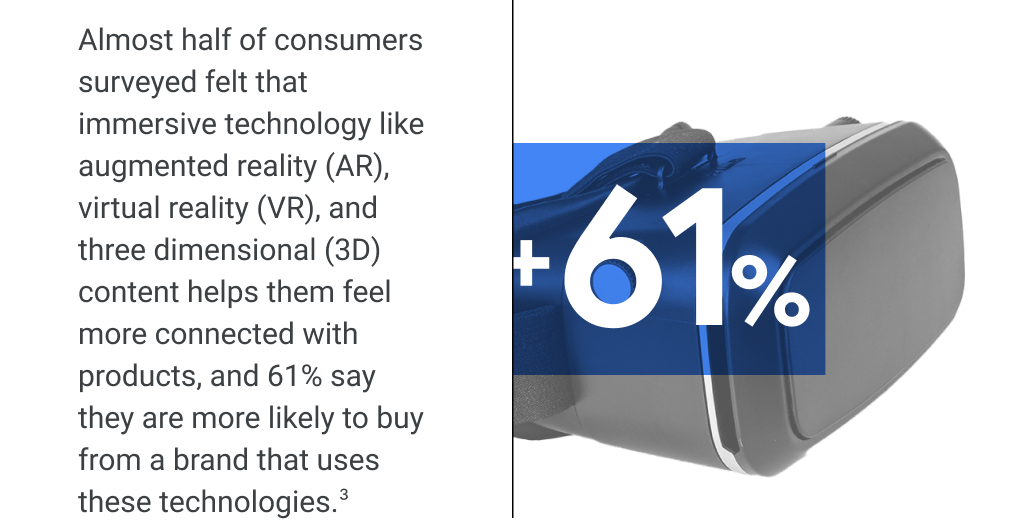
As more YouTube creators go live to review products and discuss their shopping hauls, livestreaming is becoming increasingly influential in the consumer’s decision-making process. YouTube Masthead enables you to work with creators and maximize the livestreaming opportunity, and even broadcast your live digital event at the top of the YouTube homepage.
YouTube’s Holiday Stream and Shop hosted livestreams by creators and brands together.

Conversational commerce can personalize shopping journeys and offer shoppers assistance. For example, a live chat function on your e-commerce platform enables a two-way conversation with customers. Shoppers can clarify delivery statuses or ask questions, while your brand can showcase relevant products and learn from customers why they drop off.
Google Cloud’s Contact Center AI (CCAI) has revolutionized the customer experience through features such as AI-enabled conversations, advanced speech-to-text functions, and AI-based call routing. Unilever Philippines made use of Google's conversational AI to create a customized chat bot that provides product recommendations based on local weather conditions. This service led to higher customer satisfaction and brand loyalty.







